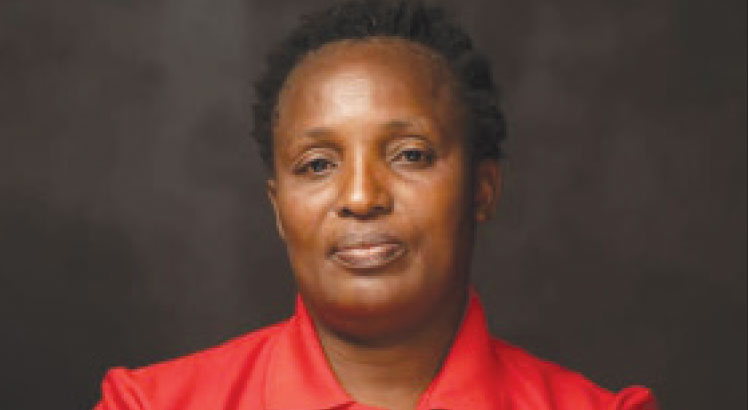Two unfashionable semi-detached classroom blocks and a roughly-constructed tiny library. That, plainly, is all that is Namadidi Community Secondary School.
Located on the bounds of Zomba District and accessed by a muddy road that breaks through strips of vegetation, the institution exemplifies high deprivation levels prevalent in rural academic centres.
Construction of lab underway at Kasungu Secondary School
On the sanitation gauge, Namadidi is a cosmos of danger that, at any time, can explode into fragments of poor hygiene—triggered diseases. With an annual enrolment of 220 learners, the school only has six toilets; two for boys and four for girls.
And, shortage of classrooms adds a fresh layer of turmoil.
The school’s head teacher Kenneth Chinangwa says when Form Two and Four learners are writing examinations they suspend Form One and Three classes to create space.
“This derails our work as we waste precious days which we could have delivered lessons,” he laments.
This is now. The future, however, looks superbly bright as Equity with Quality and Learning at Secondary (Equals) project, is turning the school from life-without-a-promise to one with.
The $90 million (K92.7bn) World Bank-funded initiative targets 500 000 secondary school students, providing them with instructional materials and improved learning environments through expanded and upgraded school facilities.
Being implemented in 13 districts, the initiative will add classrooms, a science lab and eight toilets to Namadidi and there is a prevalence of optimism that the infrastructure will improve science subjects delivery.
“Last year, we scored a 48 percent pass rate in sciences. With the presence of the laboratory, we are targeting over 70 percent pass rate,” the head teacher excitedly remarked.
On the infrastructural front, the project will upgrade 103 secondary schools through construction of 65 double classrooms, 88 twin science laboratories, 45 libraries and 105 toilet blocks.
Chilumba Secondary School in Karonga is one of the beneficiaries where construction of a classroom block is underway.
One of the learners there, Eunice Ngosi, praises the project as crucial in decongesting classrooms, a long-standing challenge in the district.
She stated: “During the hot season it is quite uncomfortable to learn in crowded classrooms. The addition of new classrooms will decongest the classes and make learning more comfortable. So, we are excited.”
On capacity building, Equals Project seeks to sharpen skills of 4 500 CDSSs mathematics and science teachers and also enhance leadership and management skills for 700 head teachers.
“This project’s successful implementation will help improve the quality of science and mathematics education delivery in CDSSs, and improve the primary to secondary transition rate in remote schools,” the project overview outlines.
Salima-based Chipoka Secondary School is seeing the construction of a double laboratory block at its campus. And its headteacher Witis Banda Mambala is optimistic the infrastructure will inspire learners.
“We have two laboratories which we use for science subjects. But they are not enough. In addition, they are old and have outdated equipment.
So, the laboratories which the project is constructing will motivate the learners and also empower teachers to improve science lessons delivery,” she says, wearing a broad smile.
The project implementation started in 2019 and is set for completion in 2025. So far, the Ministry of Education says it has registered gains in Malawi School Certificate of Education (MSCE) science subjects pass rate.
In 2022, it points out, that the MSCE pass rate for physics was at 73.37 percent up from 73.07 percent in 2021 and 66.81 percent in 2020. In mathematics the pass rate stands at 50.27 percent from 49.54 percent in 2021 and 48.12 percent in 2020.
Further, the Ministry reveals that in the 2022 results, the chemistry pass rate was at 74.60 percent, a jump from 72.06 percent in 2021 and 47.84 percent in 2020.
Meanwhile, the pass rate for biology has moved from 61.18 percent and 61.44 percent in 2020 and 2021, respectively, to 63.79 percent last year.
These gains, the Principal Secretary for Ministry of Education Chikondano Mussa pinpoints, are products of the project’s intervention which include provision of books to learners.
“Through the project we have been able to bring the student-textbook ratio to 1:1 in biology, physics and chemistry,” she asserts.
In addition, Mussa says the project has enhanced students’ assessment effectively making it easy to identify gaps in lesson delivery.
“Most teachers are used to end of term examinations. This time around we are saying when we are teaching a topic, we should be able to assess and find out who is lagging behind, who is getting it.
“This will help the learners to keep pace so that by the end of the day, they are at the same pace with everybody else in their class,” she adds.
Construction of lab underway at Kasungu Secondary School
The post Rescuing schools from destitution first appeared on The Nation Online.
 Moni Malawi
Moni Malawi 

